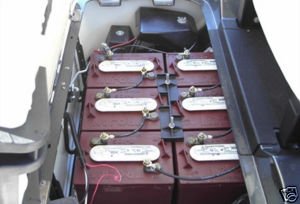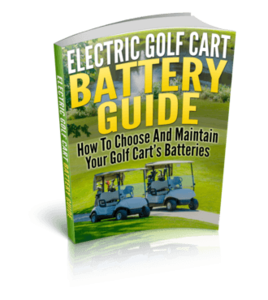Golf Cart Troubleshooting Tips
Effective Electric Golf cart troubleshooting tips
As a golf cart owner do you know what to do when something goes wrong? That’s where golf cart troubleshooting tips come in. These are a set of guidelines and best practices for identifying and resolving common issues with golf carts.

As an experienced golf cart owner you know the importance of being able to troubleshoot your golf cart. Understanding how to diagnose and fix problems on your own can save you time, money, and frustration. And by avoiding costly repairs, you can keep your golf cart running smoothly.
In this article, we’ll walk you through common issues with golf carts such as battery problems, motor issues, and controller failures. We’ll show you how to diagnose and fix these issues, as well as what tools and equipment you need for troubleshooting your golf cart. Additionally, I’ll provide you with safety precautions to take when working on your golf cart.
Whether you’re a seasoned golfer or a newbie, this article is for you. It’s time to take a closer look at your golf cart and learn how to troubleshoot it. With these golf cart troubleshooting tips, you can save time and money, and enjoy a more reliable and efficient golf cart experience.
Let’s dive in and discover the world of golf cart troubleshooting.
As the avid golfer’s main mode of transportation in and around the golf course, the golf cart requires regular maintenance to ensure optimum performance. Electronic golf carts typically use acid-based batteries that are constantly recharged by golf cart battery chargers.
Batteries provide power and are the most common cause of golf cart problems.
Thus, golf cart troubleshooting often includes preventive measures such as an effective golf cart battery maintenance program.
Checking your batteries is the first of our golf cart troubleshooting tips:
When your golf cart won’t start, the first step in golf cart troubleshooting tips is to check its batteries for:
- Dirty or loose terminals: Dirt and debris that accumulate around the battery terminals can obstruct the flow of electricity while loose connections prevent the smooth flow of current in the battery.
- Low water level: Check the golf cart battery’s water level and ensure that it has sufficient water to cover the plates.
- Defective golf cart battery charger: Check that your golf cart battery charger is feeding enough “juice” to the battery. When the golf cart battery is plugged to the charger, the golf car battery meter should indicate a power supply within the 15 to 20 amp range; otherwise, your battery is not getting enough energy for it to work.
Essential tools for golf cart troubleshooting tips in battery maintenance:
- Wrench for tightening caps
- Distilled water
- Voltmeter for measuring voltage between 2 points of the battery circuit
- Hydrometer for measuring the specific gravity of the electrolyte solution
- Brush or cloth for cleaning the external surfaces of the battery
- Baking soda
- Protective glove
Golf cart battery maintenance tips
- Inspect your battery regularly. Keep its terminals clean using a solution of baking soda and water. Always wear protective gloves when working with batteries.
- Check water levels. The water level inside each battery cell must cover all the plates without reaching the caps. Increase low water levels by adding distilled water.
- Replace damaged golf cart batteries when necessary. Replace golf cart battery chargers when they fail to charge batteries sufficiently.
Regular golf cart battery maintenance can prevent many problems in operating your golf cart and is the key to prolonging its service life. Golf cart batteries depend on golf cart battery chargers for energy and long-lasting performance. Choosing the right battery charger along with other routine maintenance checks and procedures can help prolong the life of your battery.
Don’t wait for problems to strike at the golf course when you need your golf cart the most. Investing in a quality golf cart battery maintenance program is a proactive approach and one of the very important golf cart troubleshooting tips.
 Remember: As the main source of power to your electric golf cart, the batteries are commonly the cause for why your electric golf cart won’t start. Acid-based batteries are typically used for electric golf carts and must be recharged in order to work properly
Remember: As the main source of power to your electric golf cart, the batteries are commonly the cause for why your electric golf cart won’t start. Acid-based batteries are typically used for electric golf carts and must be recharged in order to work properly
Golf Cart Battery Gauge | When to Charge Your Batteries
FAQ’s
Q: My golf cart won’t start, what should I do?
Answer: First, make sure the batteries are charged and connected properly. Check the battery terminals for corrosion and clean them if necessary. If the batteries are fine, check the solenoid and wiring for any damage or loose connections. If you still can’t figure out the problem, it’s best to take your golf cart to a professional mechanic for further diagnosis.
Q: My golf cart is making strange noises, what could be the problem?
Answer: Strange noises from your golf cart could be caused by a number of issues. If you hear a grinding noise, it could be a problem with the brakes. If you hear a clicking noise, it could be a problem with the solenoid. If you hear a squeaking noise, it could be a problem with the suspension or steering. It’s best to have a mechanic diagnose the problem to avoid any potential safety issues.
Q: My cart is not accelerating properly, what should I do?
Answer: If your golf cart is not accelerating properly, it could be a problem with the accelerator pedal, motor, or controller. First, check the accelerator pedal to make sure it’s not stuck or damaged. If the pedal is fine, check the motor and controller for any damage or loose connections. If you’re not comfortable performing these checks, take your golf cart to a mechanic for further diagnosis.
Q: My cart is overheating, what could be the problem?
Answer: Overheating in a golf cart could be caused by a problem with the cooling system, such as a malfunctioning fan or clogged radiator. Check the fan and radiator for any damage or blockages, and make sure the coolant levels are sufficient. If the problem persists, take your golf cart to a mechanic for further diagnosis.
Q: My golf cart is not moving smoothly, what could be the problem?
Answer: If your golf cart is not moving smoothly, it could be a problem with the tires, suspension, or steering. Check the tires for any damage or uneven wear, and make sure they’re properly inflated. Check the suspension and steering components for any damage or looseness. If you’re not comfortable performing these checks, take your golf cart to a mechanic for further diagnosis.
Q: My electric golf cart battery is draining quickly, what should I do?
Answer: If your golf cart battery is draining quickly, it could be a problem with the charger, batteries, or electrical system. Check the charger for any damage or loose connections, and make sure it’s compatible with your golf cart batteries. Check the batteries for any damage or signs of wear, and make sure they’re properly charged. If the problem persists, take your golf cart to a mechanic for further diagnosis.
As an Amazon Associate, I earn from qualifying purchases. GolfCartBatteryChargerGuide.com is a participant in the Amazon Services LLC Associates Program, an affiliate advertising program designed to provide a means for sites to earn advertising fees by advertising and linking to Amazon.com,
Links on this electric golf cart troubleshooting tips page are sponsored affiliate links and the owner makes a commission if you buy after clicking these links. The owner is not a bonafide user of golf cart troubleshooting tips. However, he has thoroughly researched it and provided a personal opinion only. This disclosure is in accordance with the Federal Trade Commission’s 16 CFR, Part 255: “Guides Concerning the Use of Endorsements and Testimonials in Advertising.”

